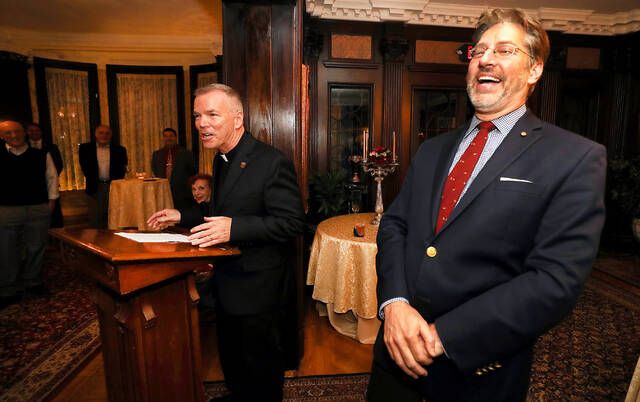Click here to subscribe today or Login.
This area — this county — does not have the best track record in preserving buildings with important history or distinctive architecture. We get it right sometimes, by chance or design, but our collective approach to the issue is scattershot at best.
Thus we spent a fortune on efforts to save the Hotel Sterling only to raze it and leave a vacant lot for years at a gateway corner in Wilkes-Barre. We saw noble attempts to save the Huber Breaker fall far short of the money and effort actually needed. We lost a train station in Hazleton ages ago and watched one in Wilkes-Barre decay before our eyes before a glimmer of salvation emerged. The Irem Temple in Wilkes-Barre? Still hoping, though a dedicated group has been working on the project in recent years.
The list of wonderful and once-important buildings forever erased from our region is long, the success stories sporadic. In the Susquehanna Valley, this is due in no small part to the staggering devastation from the 1972 Agnes flood that forced a radical re-shaping of many areas. But that was a one-time catalyst, not a continuous force of change. Our preservation missteps are more often of our own choosing.
The real culprit is more likely our indifference to the value of the buildings that have disappeared. In fact, considering the brutal nature of the early days of coal mining that helped build the area, many may have wanted to forget our history, and thus the historic buildings, opting for a “modern” look.
Alas, much of that “modernization” occurred in the 1970s (thanks to Agnes), an era when urban renewal seemed to mean lots of flat, dull facades intended to look sleek or even “futuristic.” You’d be hard pressed to find contemporary urban planners who think the results in that era were smart choices. Cities and towns that kept their older buildings now often bustle with tourism thanks to the architecture that made them stand out a century ago. Think Jim Thorpe.
All of which makes the Wilkes-Barré Preservation Society’s first-ever Preservation Awards ceremony Monday particularly welcome. Recognizing effective preservation and re-purposing of old buildings is one step in reminding us all of the value said efforts — and buildings — can still bring.
And the inaugural winners of the new award certainly deserve the accolades. In recent years King’s College has done an exemplary job of re purposing iconic buildings in downtown Wilkes-Barre, partnering with Williams, Kinsman and Lewis Architecture, P.C. and some reliable contractors.
The two successes cited should stand as case studies in effective preservation: The conversion of the former Spring Brook Water Company Building into the Mulligan Center for Engineering and the careful restoration of the former Memorial Presbyterian Church into The Chapel of Christ the King.
As reported in these pages over the length of the projects, in both cases King’s and WKL took painstaking steps to not only preserve unique features of each building, but to restore them. In the church, long-neglected woodwork, flooring and stained-glass windows — including one set created as homage to three children who died of scarlet fever — were brought back to glory. The Mulligan Center work included restoring copper cladding on many windows, and finding innovative uses for heavily fortified vaults on each floor.
This sort of effort deserves to be praised, and emulated. With luck and effort, the fledgling preservation award will grow both in value to the area and in the area it covers. The old adage says those who forget history are doomed to repeat it. The corollary is those who raze history are doomed to forget it.
— Times Leader





